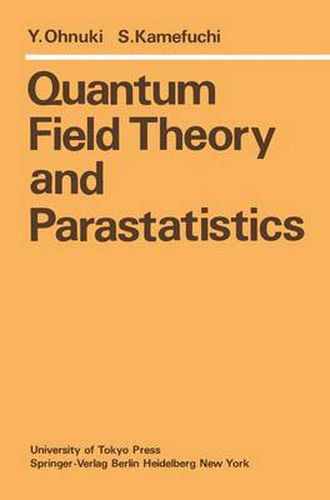Readings Newsletter
Become a Readings Member to make your shopping experience even easier.
Sign in or sign up for free!
You’re not far away from qualifying for FREE standard shipping within Australia
You’ve qualified for FREE standard shipping within Australia
The cart is loading…






This title is printed to order. This book may have been self-published. If so, we cannot guarantee the quality of the content. In the main most books will have gone through the editing process however some may not. We therefore suggest that you be aware of this before ordering this book. If in doubt check either the author or publisher’s details as we are unable to accept any returns unless they are faulty. Please contact us if you have any questions.
In examining the problem of quantization it is customary to proceed by following the order of historical developments, i. e. , to start with the so-called first quantization and then go on to second, or field, quantization. As is well known, the former consists in setting up commutation relations among the canonical variables (of finite degrees of freedom) which are defined originally in classical mechanics, and the latter consists in doing the same among field variables. In our opinion, however, the above order does not necessarily reflect that of physical importance. In fact, a close look at the theoretical that the latter plays a more fundamental role structure immediately reveals than the former in various respects. First, the former can be derived from the latter, and second, the assumptions that have to be made in the former, e. g. the spin-statistics connection, can be justified in the latter on the basis of its own theory. Furthermore, as the history of the positron theory shows, if we remain within the framework of the first-quantized formalism, it will no longer be possible to have a closed theory in the relativistic region where the problem becomes essentially that of an infinite number of particles.
$9.00 standard shipping within Australia
FREE standard shipping within Australia for orders over $100.00
Express & International shipping calculated at checkout
This title is printed to order. This book may have been self-published. If so, we cannot guarantee the quality of the content. In the main most books will have gone through the editing process however some may not. We therefore suggest that you be aware of this before ordering this book. If in doubt check either the author or publisher’s details as we are unable to accept any returns unless they are faulty. Please contact us if you have any questions.
In examining the problem of quantization it is customary to proceed by following the order of historical developments, i. e. , to start with the so-called first quantization and then go on to second, or field, quantization. As is well known, the former consists in setting up commutation relations among the canonical variables (of finite degrees of freedom) which are defined originally in classical mechanics, and the latter consists in doing the same among field variables. In our opinion, however, the above order does not necessarily reflect that of physical importance. In fact, a close look at the theoretical that the latter plays a more fundamental role structure immediately reveals than the former in various respects. First, the former can be derived from the latter, and second, the assumptions that have to be made in the former, e. g. the spin-statistics connection, can be justified in the latter on the basis of its own theory. Furthermore, as the history of the positron theory shows, if we remain within the framework of the first-quantized formalism, it will no longer be possible to have a closed theory in the relativistic region where the problem becomes essentially that of an infinite number of particles.